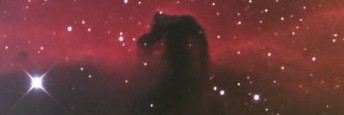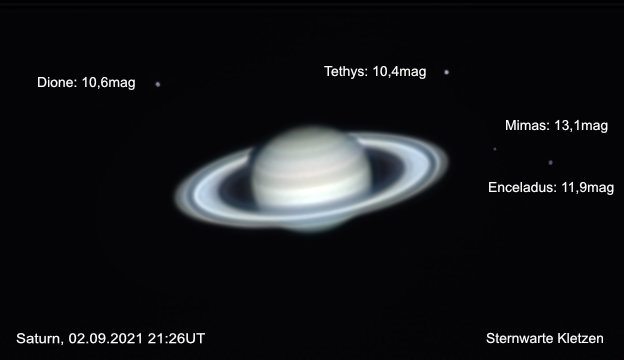Recordings - The planet Saturn
Saturn is the second largest after Jupiter planet of the solar system. At the same time it is because of its distinctive ring system for many observers simply beautiful to look at. While when observing Saturn, the position of its moons is constantly changing, At first glance, nothing seems to be happening with the rings. Yet it is not so. About every 15 years one sees clearly from the earth on the edge of the rings. Through a smaller telescope they are then no longer to be seen. Since I've been going back and forth since 2003 photographed Saturn, you can see this development with the pictures comprehend:
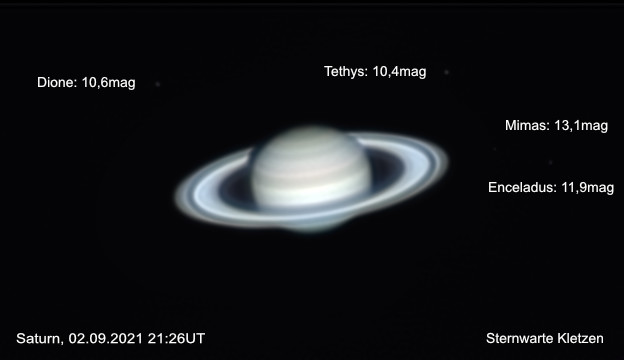
Saturn with moons as seen in a telescope when the sky is particularly clear.
The moons are highlighted slightly when you hover over them with the mouse.
Saturn and ring positions since 2003
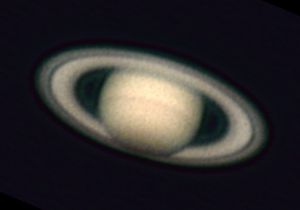
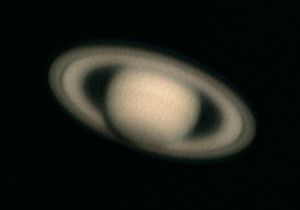
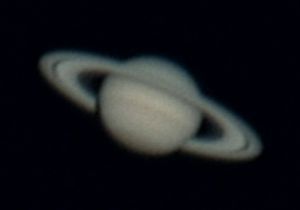
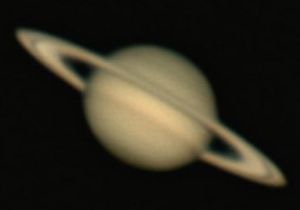
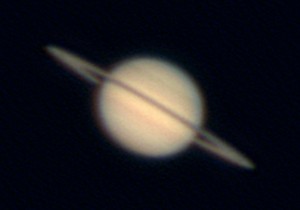
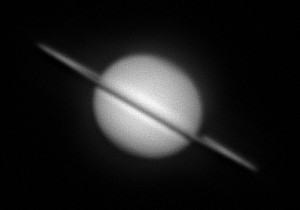
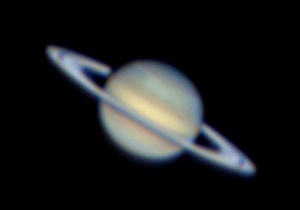
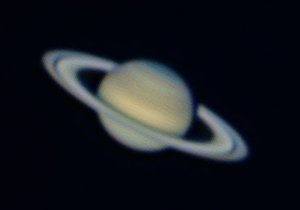
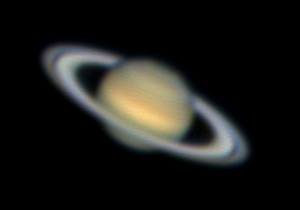
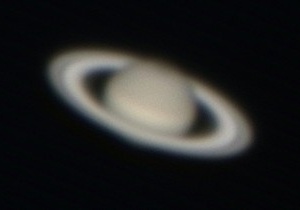
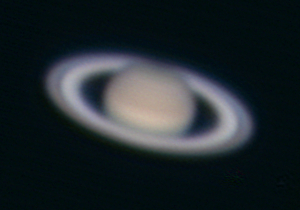
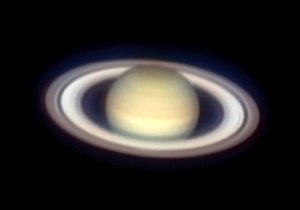
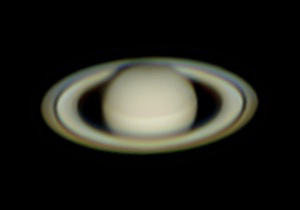
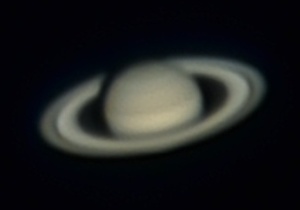
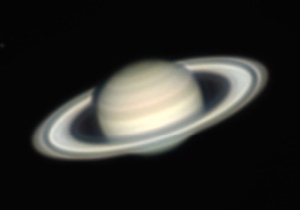
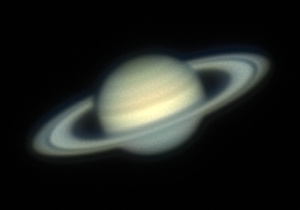
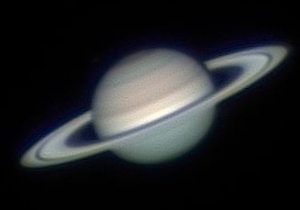
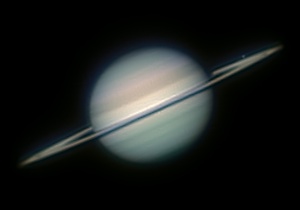
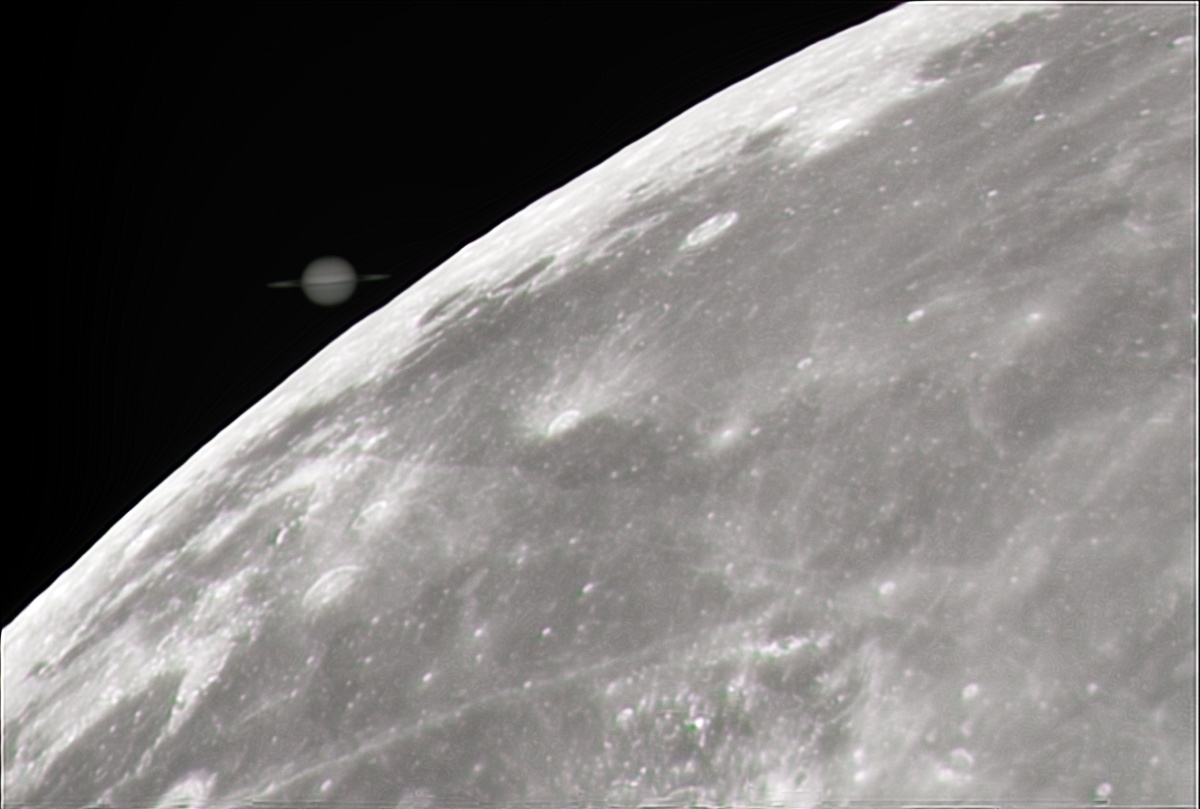
Around 05:33:19 CEST the moon was near by the Saturn.
Recording: 40cm Newton, ASI178MMC
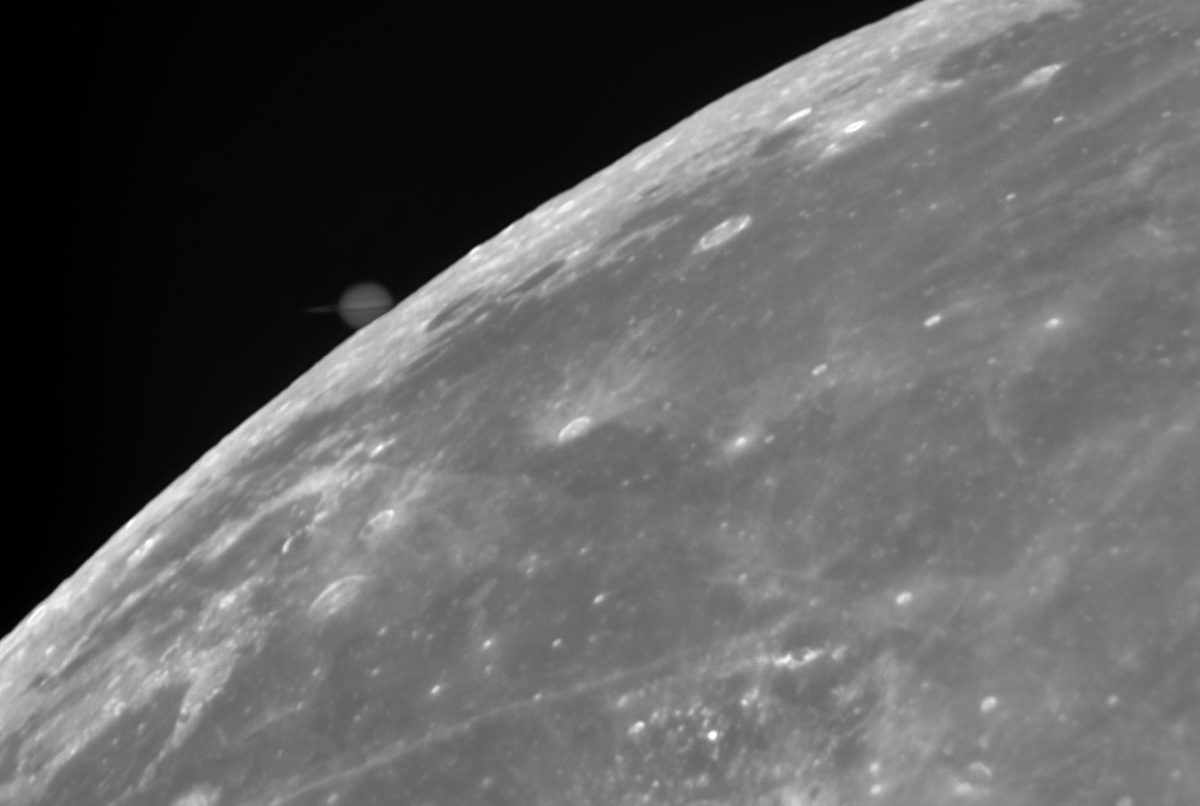
Around 05:33:43 CEST the moon has already covered the Saturn a bit.
Recording: 40cm Newton, ASI178MMC
A strongly compressed part of the recording sequence of the coverage event on August 21, 2024.
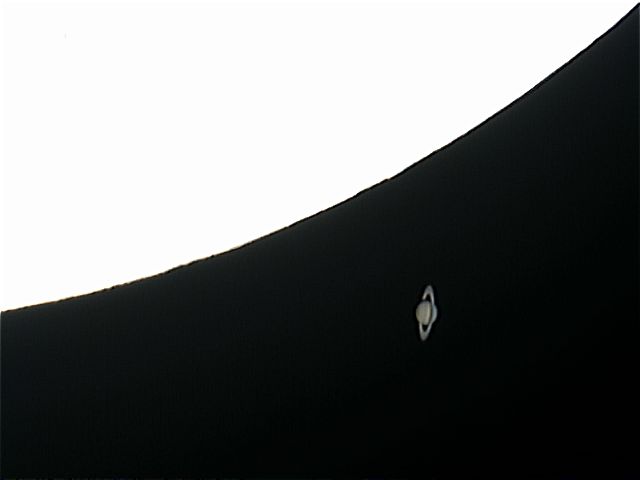
Moon occultation of Saturn.
At 21:19 CEST the Moon moved in front of Saturn and around 21:27 Saturn reappeared from behind the Moon. Unfortunately I didn't have the technology under control at this moment of all times, so this is the only picture of the event.
Recording: 22.05.2007 22:27 CEST

Saturn 2024 shortly before the opposition with little inclined rings and moons almost in line.
Moving the mouse over image with, the names of the moons are visible.
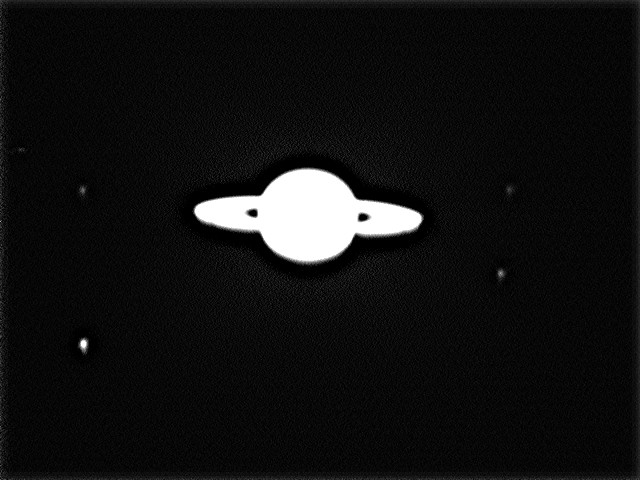
Image of Saturn with 4 bright moons. Saturn is overexposed, because otherwise you wouldn't be able to see the moons./p>
| middle | Saturn, brightness 0.3 mag |
| Top left | Tethys, brightness 10 mag |
| Top right | Dione, brightness 10.2 mag |
| Links unten | Titanium, brightness 8.2 mag |
| Bottom right | Rhea, brightness 9.5 mag |



